Military Knowledge: Leopard 2

Leopard-2 tank is considered as one of the best main battle tanks in the world. “Main Battle Tank” is a tank that is responsible for direct fire and armored maneuver in many modern armies. This tank is the third generation of the German’s Main Battle Tank after World War II. The production of this tank started in 1977 by the Krauss-Maffei company and entered the service of the German Federal Armed Forces in 1979.
The first generation of the Germans’ Main Battle Tank (MBT) was the M48 Patton tank made by the United States, and the second generation was the Leopard-1 tank, which is still in service with modifications for other NATO users. The Leopard 1 tank was designed and produced in West Germany in the 1960s. This tank was first produced in 1963 by Krauss-Maffei for the Ministry of Defense of West Germany, and more than 6,000 units of it were produced for 9 NATO member countries, including Germany, the Netherlands, Belgium, Greece, Turkey, Italy, Canada, Norway, as well as Made in Australia.
To develop and improve the Leopard-1 tank, Germany started developing the MBT-70 project in 1963 with the cooperation of the United States of America. However, in 1967, the German government ordered Porsche to research the facilities needed to upgrade the Leopard-1 tank. It is interesting to know that the Leopard-1 tank was in the service of Germany from 1965 to 1995, and the need for the MBT-70 project was announced before the Leopard-1 tank entered service. Leopard-1 was designed by Porsche and manufactured by Krauss-Maffei. This issue becomes more interesting when you know that Porsche named this new project Vergoldeter Leopard or Gilded Leopard and focused on updating with advanced technologies. Adding an automatic loader, an automatic and coaxial cannon with a machine gun, an independent periscope for the commander, the possibility of using an anti-aircraft machine gun from inside the cabin, the presence of a television surveillance camera on the mast with the possibility of increasing the height, changing the shape of the turret, improving the suspension system, the gearbox and engine exhaust valves, were considered as new project items.
Development and production:
In 1967, the West German government decided to produce a prototype of the Gilded Leopard project, as well as an experimental development based on the Leopard 1 tank. But due to the lack of sufficient funds, it was not possible to develop two projects at the same time, finally a trial development contract was concluded with Krauss-Maffei, but this company committed to work with Porsche to develop the chassis and with Wegmann to develop the turret. In this regard, two prototypes with different components were built with the aim of improving the Leopard 1 tank to match the firepower requirements of the MBT-70. The purpose of these optimizations was to increase the probability of hitting the first shot at a range of more than 2000 meters. Also, increasing the ability to accurately engage with moving targets using a computerized fire control system was another main goal of the experimental development. The tanks built were nicknamed Keiler. Two prototypes (ET01 and ET02) were built by Keiler in 1969 and 1970, both powered by the MB872 engine.
After many ups and downs in 1971, the name of the MBT-70 project was changed to Leopard-2. In the same year, 17 prototypes were ordered, but only 16 hulls were built because production of the PT12 hull was cancelled. The turrets were named from T1 to T17 and the hull from PT1 to PT17. These prototypes were produced to perform numerous tests, from the required and different components and concepts for the development of the tank, and each sample had components that were not found in other samples. Ten of these turrets were equipped with 105 mm cannons and seven prototypes were equipped with a 120 mm cannon. The welded turret used spaced armor formed by two steel plates. Prototypes were equipped with the EMES-12 optical range finder and fire control system, which was later used in the Leopard 1A4. The T14 turret was modified to install new anti-armor modules and was equipped with an all-electric turret drive and stabilization system. The turret was jointly developed by General Electric and AEG Telefunken.

In July 1973, an agreement was signed between the defense ministries of Germany and the United States to standardize the Main Battle Tanks (MBT) in favor of NATO. Due to the previous joint cooperation on the MBT-70 design, it was decided to use the parts that were completely manufactured by German companies for the Leopard 2 in the Abrams tank prototype, which reduced the cost of the XM1 Abrams design.
According to the US laws, it was not possible to interfere in the production of the XM1 Abrams tank by the German company. As a result, modification of the Leopard-2 prototypes to meet US Army requirements was considered. On December 11, 1974, a memorandum of understanding was signed between Germany and the United States that required the United States to test a modified version of the Leopard-2 against the XM1 prototypes. Also, this memorandum obliges the Federal Republic of West Germany to send a sample suitable to the needs of the United States for examination.
A tougher version of the Leopard 2 tank, the Leopard 2AV, was developed to meet both US requirements and the latest protection requirements of the German Ministry of Defence. The T14 turret was used as the main turret of the Leopard 2AV, but achieving the required level of protection for the hull required further research, until final ballistic tests were carried out in June 1976. The United States preferred to use a US-made laser range finder; For this purpose, the US Hughes company’s laser range finder was used on the turret. This turret was installed on the PT19 prototype.
Compared to the Leopard 2 prototypes, the AV prototype had a fire control system, along with the EMES-12 optical range finder. In this example, the crosswind sensor was removed and air pressure and temperature sensors were added. Modifications such as the addition of a PERI R12 commander’s sight with infrared illuminator, short-range anti-infantry grenade launcher, retractable searchlight, fixed searchlight, retractable night vision camera, APU and mechanical loading assistant were among the additions to the AV prototype.
Due to the longer-than-expected design and production of the Leopard 2AV, it was not possible to send the Leopard 2AV to the United States and conduct tests in the United States before September 1, 1976. Despite German efforts to evaluate the Leopard 2AV and XM1 prototypes at the same time, the US Army decided not to wait for the Leopard 2AV and tested XM1 prototypes built by Chrysler and General Motors.
The Germans sent two prototypes of the hull and three turrets to the United States: the PT20 using a 105 mm L7 gun with a Hughes fire control system, and the second PT19 with the same Hughes fire control system but with the 120 mm Rheinmetall cannon. The third prototype was called the PT21, which was equipped with a Krupp Atlas Elektronik EMES-13 fire control system and a 120 mm Rheinmetall cannon. A study conducted by the US company FMC showed that manufacturing the Leopard 2AV under license in the US would not exceed the cost limits set by the US military. Thus the Leopard 2AV design fully met the US requirements. But after obtaining the license to manufacture the Leopard 2AV, FMC decided not to submit a technical proposal because they saw little chance of acceptance for a vehicle that had not been developed in the United States. For this reason, the focus was on common features and components between the two tanks.
A US military evaluation found that the XM1 had more special armor than the Leopard 2AV. In tests, the Leopard 2AV was found to have the same performance as the XM1 prototypes, but the AGT-1500 turbine engine used about 50% more fuel. The wheel chains on the Leopard 2AV tank had good endurance, while the wheel chains used on the XM1 prototypes failed to meet the Army’s requirements. The thermal reflection of the MTU diesel engine used in the Leopard 2AV was much lower than the AGT-1500 turbine engine used in the XM1 Abrams. The fire control system in Leopard-2 performed better and the 120 mm gun showed its superiority. The projected production costs for one XM1 tank were $728,000 in 1976, and the costs for one Leopard 2AV were $56,000 higher.
Contradictory statements about the reasons for rejecting the Leopard 2AV tank were given by America; Such as lower loading speed for firing and lower tank weight as well as better stabilization system of the XM1 Abrams tank. This decision was criticized by many German experts at that time.
The Ministry of Defense of the West German Federal Government ordered 1,800 Leopard 2 tanks in September 1977, to be produced in five batches. The main contractor was Krauss-Maffei Wegmann (KMW), but Maschinenbau Kiel (MaK) was also contracted to produce 45% of the tanks. The first batch consisted of 380 tanks, with delivery of six tanks scheduled for 1979, 114 tanks for 1980, 180 tanks for 1981, and 300 tanks each year thereafter. This tank entered service from 1979 and Germany received more than 2000 Leopard 2 tanks by 1991. During the Cold War, KMW Company was able to produce 16 units per month and MaK Company was able to produce 9 units per month of this tank. But after the end of the cold war, this production decreased, but KMW company has still maintained its production capacity.
Leopard 2 variants:
Leopard 2: The base and early version of the Leopard 2, sometimes informally called “A0” to distinguish it from later versions. This version was the first version produced in the Leopard tank series. From October 1979 to March 1982, a total of 380 tanks of this version were produced.
Leopard 2A1: In this version, a number of minor modifications were made, including the installation of a thermal sight for the gunner and new ammunition racks on the Leopard-2 tank. This variant of Leopard-2 tank has been used in the Netherlands and Canada.
Leopard 2A2: This version uses a new thermal sight. This modernisation gradually replaced the original PZB 200 sights in the first batch with thermal sights for the EMES 15 as they became available. The upgrade included the fitting of filler openings and caps to the forward hull fuel tanks to allow separate refuelling. There was an addition of a deflector plate for the periscope and a large coverplate to protect the existing NBC protection system. The tank was given new five metre towing cables with a different position.
Leopard 2A3: The main change was the addition of the SEM80/90 digital radio sets (also being fitted to the Leopard 1 at the same time), and the ammunition reloading hatches being welded shut. Even with these minor changes the new batch was known as the 2A3.
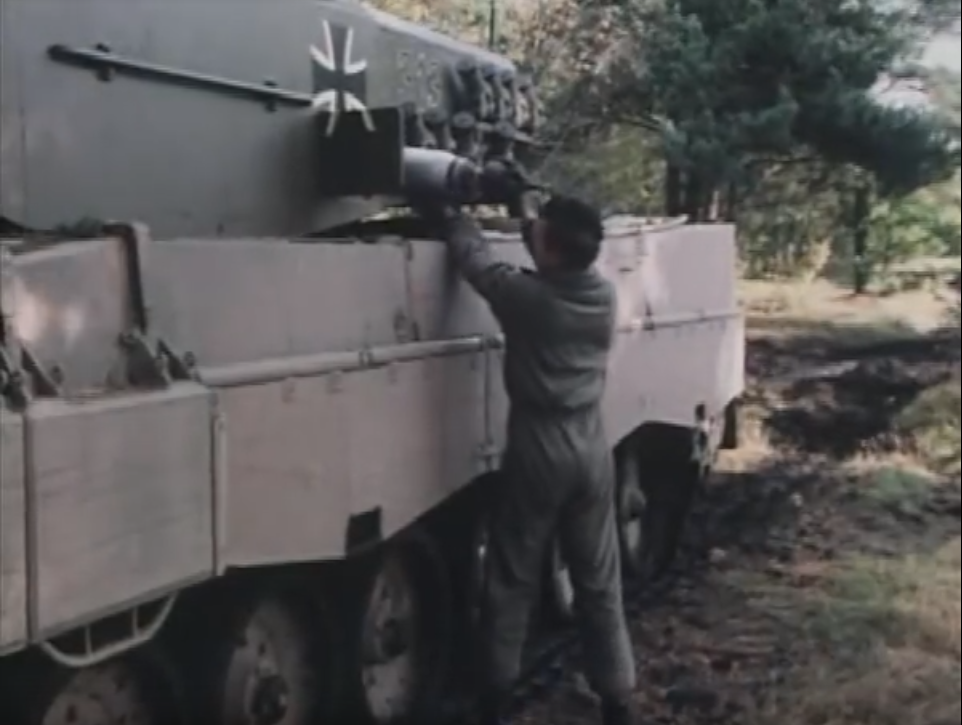
Leopard 2A4: This version is equipped with a 120mm caliber L44 smoothbore gun along with a high-performance stabilizer, which gives it better combat capabilities than the previous generation. In addition, it has received several upgrades and renovations since its introduction in 1985. The addition of a digital ballistic computer along with an improved fire suppression system plus optimization of the front turret and cannon protection, a new electronic turret and a new automatic cannon arming mechanism, a commander’s periscope equipped with an infrared camera and thermal imaging device, a modern navigation system and etc, are just a few of the upgrades that have been made since then. In general, all models of the Leopard-2 tank have armor consisting of a combination of steel plates of different hardness, elastic materials, and other non-metallic materials to repel various types of anti-armor ammunition, in which changes have been made in this model so that the armor of the Leopard-2 tank model A4 It has a maximum physical thickness of 800 mm.
The Leopard 2A4 tank was the most produced of the Leopard 2 tanks. Between 1985 and 1992, 2,570 Leopard 2A4 tanks were built for Germany and the Netherlands. After the end of the Cold War, many A4s were sold to other NATO countries including Canada, Denmark, Finland, Greece, Norway, Poland, Portugal, Spain, Sweden and Turkey have also used this tank.
The latest A4 model is the Leopard 2A4M. The Leopard 2A4M add an additional mine protection plate for the belly, which increases protection against mines and IEDs. Adaptive suspension systems with a combination of thermal imager and low light amplifier, driver’s night vision system for front and rear vision are also among other optimizations of the 2A4M model. Also, to increase operational capabilities, the A4M is equipped with an engineering interface and additional mounts for attaching a bulldozer blade, plow, or roller for dealing with mines.
During the war between Russia and Ukraine, the Leopard 2A4 tank was the most important option sent by the countries supporting Ukraine. Meanwhile, the Czech Republic was an exception as it sent T-72 MBT tanks to Ukraine and received Leopard 2 in return. On June 5, 2022, Spain announced the delivery of 40 Leopard 2A4 tanks to Ukraine. On January 26, 2023, Canada announced that it had delivered four Leopard 2A4 tanks to Ukraine from their military inventory. On February 3, 2023, Spain announced a plan to supply up to 6 Leopard 2A4 tanks to Ukraine. The first four Leopard 2A4 tanks donated by Poland arrived in Ukraine on February 24, 2023. On March 4, 2023, citing information published by the German news magazine “Der Spiegel”, it was stated that the German company Rheinmetall is ready to supply 50 Leopard 2A4 tanks to Ukraine. Also, on March 7, 2023, Poland announced the delivery of 10 more Leopard 2A4 tanks to Ukraine.

Specifications of the Leopard 2A4 tank:
Length (turret forward): 9.67 meters
Width: 3.7 meters
Height: 2.79 meters
Weight: 52 tons
Combat weight: 55 tons
Engine power: 1500 horsepower (1100 kW)
Maximum speed: 70 km/h on road and more than 30 km/h off road
Operational range: 450 km
Weapons: 120 mm smoothbore gun L/44 – 7.62 mm machine gun

Leopard 2A5: The development of this version of the Leopard 2 tank began in 1995 and its production continued until 2002. In the A5 model, armor with a high slope is placed in the front part of the turret and in the sides, and the thickness of the armor has been increased to 1200 mm by these sloped modules. Improvements have also been made to the main armor composition, making it resistant to 125mm APFSDS rounds fired from 1,500 meters away. The inner part of the tank has a spall liner. These liners are used to eliminate the damage caused by projectiles and the fragmentation of armor parts inward if the armor is penetrated. The front third of the tank’s side skirts armour, which protect the tanks against projectiles and rocket-propelled grenades (RPGs), have been replaced with a new, stronger type.


In addition to the armor changes mentioned earlier, there have also been changes in the command and control section. This tank uses the same gun as the A4 model, i.e. the Rheinmetall 120 mm smoothbore gun L/44 along with two 7.62 mm machine guns, one of which is located on the left side of the gun coaxially with it and the other on the turret and requires an operator outside the tank turret. Two groups of four 76 mm smoke grenades are installed on each side of the turret. The Leopard 2A5 turret is equipped with fully electronic gun control equipment as a replacement for the previous Leopard 2A4’s hydraulic system.
This model of tank has been used by Germany, Sweden, Spain and 16 other countries. There is also the possibility of delivering this variant to Ukraine.
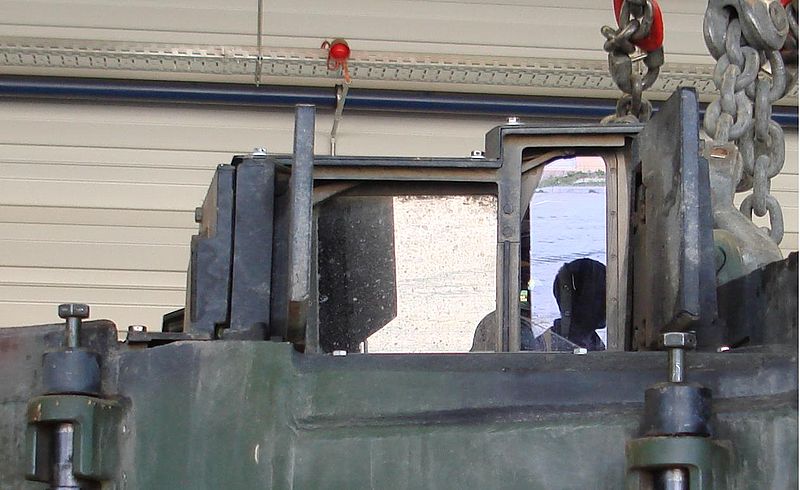
Leopard 2A6: The A6 version has a Rheinmetall 120 mm smoothbore gun L/55, which is one meter longer than the L/44 model used in the A5, making it easy to distinguish the A6 from the A5. This modern gun has more power due to the use of longer length and high caliber bullets. With the new ammunition, the L/55 also gains greater penetration power at greater distances. With the improved DM53 kinetic energy ammunition, the L/55 gun can fire up to a range of 5,000 meters.
DM53 ammo is a new type of ammo that has a melting shell, this increases the volume of explosives in the pumice, which improves muzzle velocity. The DM53 ammunition was developed for both the L/44 and L/55 cannons.
On both sides of the turret, two places with four smoke grenades are installed. The gunner is equipped with a stabilized dual-magnification EMES-15 sight with a 9,900-meter range laser rangefinder and a thermal imaging unit (WBG) connected to the fire control computer. The fire control computer sequentially calculates the sight angle and side angle for the main weapons. The production of this version started in 2001 and continued until 2005.
In general, the Leopard 2A6 tank with the changes it received reached a weight of about 61.7 tons. This tank was equipped with a MTU MB 873 diesel engine, with a power of 1500 hp, and a Renk HSWL 354 gear and brake system, so that it could carry out its missions despite its greater weight. A6 has a maximum road speed of 70 km/h and a maximum range of 450 km.

Leopard 2 also has an A6M model. In the A6M version, for more protection of the crew against mines, toothed plates are used under the chassis, which makes the crew more survivable on the battlefield.
Also, the Leopard 2A6EX model has been made with private investment for the export market. The Leopard 2A6 EX tank has an auxiliary power unit, air conditioning unit and improved armor protection over the base model A6.

Leopard 2A7: This version of the tank is known with two models A7 and A7+. The A7 tank was not optimized for urban warfare and was fundamentally different from the variants developed by KMW. Therefore, another example named A7+ has been developed by KMW (Kraus-Maffei Wegmann), which has better urban warfare capabilities added to this tank.
The Leopard 2A7+ tank has been in service since 2014 and was first publicly displayed at the Eurosatory exhibition in 2010 by the German Ministry of Defense.

The upgrade of this version of the Leopard 2 tank began in 2012. The Leopard 2A7+ is designed to operate both in low-intensity and high-intensity conflicts. The tank’s protection has been increased by modular armour. The frontal protection has been improved with a dual kit on the turret and hull front, while 360° protection against RPGs and mine protection increase the survivability of the tank in urban operations
The asymmetric threats of terrorist groups, improvised explosive devices, complex and dangerous urban environments led Krauss-Maffei Wegmann to offer the Leopard 2A7+ a suitable solution for armored forces, so that they can carry out their missions more effectively and safely.
Like the A6 version, the Leopard 2A7+ tank is equipped with the Rheinmetall 120 mm smoothbore gun L/55, replacing the L/44 cannon. Increasing the length of the barrel from 44 caliber to 55 caliber (139 cm) allows more of the energy in the barrel to be converted into projectile velocity. The new programmable 120mm HE gun capability enables the crew to engage targets behind cover and inside buildings.
The turret-mounted MG3 has been replaced with a stabilised FLW 200 remotely controlled weapon station. Mobility, sustainability, and situational awareness have also been improved.
The optimizations made in version 2A7+ are available as an upgrade kit for all versions of Leopard 2 and include a complete set of all components.

The Leopard 2A7 + tank is divided into two versions, which we will briefly introduce below:
Leopard 2A7+ Duel Operations: Developed by KMW and based on a Dutch Leopard 2A6, this model has been optimized for anti-armor operations on the modern battlefield.
Leopard 2A7+ Urban Ops: The Leopard 2A6 upgrade is equipped with new armor and special equipment for urban combat operations. In fact, this example is considered an upgrade kit.
In all types of Leopard 2 tanks, different thicknesses of armor are used throughout its body. The side and back of the tank are resistant to heavy machine guns, medium caliber bullets and old types of anti-tank ammunition. The side of the body is also covered by armor in the new types to protect against shrapnel and light anti-armor such as RPG and roadside bombs to save the tank crew. On both sides of the body, rubber plates reinforced with steel are used to cover the tank chains. To increase mine protection, a 45-degree slope is used in the front and back, and the floor is reinforced with corrugations.
Leopard 2 tanks can carry 42 bullets, 15 ready-to-fire bullets are stored in the turret and the rest are stored in front of the body and next to the driver. This ammunition tank is equipped with NBC protection system and automatic fire extinguishing systems.
This tank uses two types of APFSDS-T anti-armor bullets and HEAT-MP-T multipurpose bullets. The APFSDS-T bullet has the ability to penetrate 450 mm of rolled homogeneous armor at a range of 2000 meters. Since its introduction, several generations of APFSDS-T rounds have been developed and used by the German military. The Germans claim that the Leopard-2 tank bullet can penetrate the front armor of the Russian T-72 tank at a range of 2000 meters and the front armor of the T-62 tank at a range of more than 4000 meters.
All variants of the Leopard 2 tank have four crew members, including the commander, gunner, loader and driver, and in addition to the 120 mm cannon, it has two 7.62 mm machine guns. One is guided by the gunner and moves along with the main gun, and the other is mounted on the turret, which in the prototypes is fired by one of the crew, and in the A7+ is controlled by remote control from inside.
The engine used in the A4 and later models is a MTU MB 873 Ka-501 12-cylinder twin-turbocharged diesel engine that provides 1479 horsepower. Providing a torque of 4,700 newton meters at 1,600 to 1,700 rpm gives the tank a very good performance.


The existence of a very good suspension system and gun stabilizer has provided the possibility of accurate shooting and specific movement conditions for this tank. Leopard 2 has tanks with a capacity of 1160 liters of fuel and can travel up to 450 km on the road and up to 300 km on rough terrain.
Future development of Leopard-2 tank titled “Panther KF51”:
The Panther KF51 tank is being developed by Rheinmetall based on the Leopard 2A4 chassis and has not yet reached mass production. This tank uses a new turret that is equipped with a 130 mm automatic cannon, which gives this tank more fire power.
The development of this tank started in 2016 and the first example was produced and tested in 2018. Its full development is expected to take until 2026, but it is already possible to produce a prototype. One of the features of this tank is coordination with the HERO 120 suicide drone. Using active protection instead of passive protection, using artificial intelligence in the fire control system to enable automatic target detection and identification, using a more powerful engine, using a body with less weight and greater ability to adapt to the environment for longer survivability in the fields are some of the salient features of this model. It is also possible to create an unmanned version of the Panther KF51, which has not yet reached the stage of production and testing.
The current model of the Panther KF51 tank uses the same MTU MB 873 Ka-501 engine used in the previous models of the Leopard 2 tank. Due to the weight reduction of Panther to 59 tons, its navigation capacity has increased up to 500 km.
The KF51 Panther is stated to have three layers of protection: passive, reactive and active. The innermost layer consists of all-welded steel armour covered by passive armour modules. The second layer comprises sensor-based reactive armour, while the final layer consists of Rheinmetall’s Active Defence System (ADS) Active Protection System (APS) that Rheinmetall claims is capable of protecting against kinetic energy (KE) projectiles and Anti-Tank Guided Missiles (ATGMs). It is possible to mount the ADS on both the hull and the turret.
The Panther is fitted with eight Rheinmetall Rapid Obscuring System (ROSY) smoke grenade launchers mounted in staggered rows of two behind the central camera housing on each side of the turret. It is possible to integrate sensors into the Panther that can detect the launch signature of ATGMs and unguided anti-tank rockets before cueing the vehicle’s crew towards the threat or launching appropriate countermeasures. The Panther can be fitted with Rheinmetall’s Top Attack Protection System (TAPS). This comprises a hard-kill element in which the coverage of the ADS is extended to the roof of the platform to protect against both ATGMs and unguided anti-tank rockets launched at high elevations, as well as a soft-kill element that aims to protect against threats such as loitering munitions..
Leopard 2 export and contracts:
In 2011, it was announced that Saudi Arabia plans to purchase 270 Leopard 2A7+ tanks from Germany, but this was not confirmed by Germany.
According to reports, in 2013, Qatar ordered 62 Leopard 2A7+ tanks, 24 PzH-2000 155mm self-propelled howitzers (SPH) and several light armored vehicles in a contract worth $2.21 billion. The first batch of these weapons was delivered to Qatar in 2015 and the second batch in 2016 by the German company KMW.
On December 19, 2018, Hungary signed a contract with the German defense company Krauss-Maffei Wegmann (KMW) for the purchase of 44 Leopard 2 A7+ main battle tanks as part of its military modernization process. KMW received an order for the delivery of 44 Leopard 2A7+ tanks to the Hungarian Defense Forces in December 2018, scheduled for delivery between 2021 and 2025. According to information published in May 2022 by the Reuters news agency, the Czech Republic is negotiating with Germany to purchase 50 machines.
Leopard-2 specifications:
Crew: 4
Length Turret forward: 9.67 meters (2A4 and 2A5 models) – 10.97 meters (2A6 and 2A7+ models)
Width: 3.7 meters (2A4 model) – 3.76 meters (2A5 and 2A6) – 4 meters (2A7+ model)
Height: 2.79 m (2A4 model) – 3.03 m (2A5 and 2A6) – 2.64 m (2A7+ model)
Ground clearance: 0.54 meters
Wading depth without preparation: 1.2 meters
Wading depth with snorkel: 4 meters
Engine: MTU MB 873 Ka-501 12-cylinder twin-turbocharged diesel engine with 1500 horsepower
Fuel capacity: 1160 liters
Speed: 72 km/h – backwards 31 km/h
Range: 450 km
Empty weight: 52 tons (2A4 model) – 57.3 tons (2A5 model) – 57.6 tons (2A6 model)
Combat weight: 55.15 tons (2A4 model) – 59.5 tons (2A5 model) – 61.7 tons (2A6 model) – 67.5 tons (2A7+ model)
Rotation time (360°): in 10 seconds
Armament:
– Rh-120 L/44 120 mm smoothbore gun and 7.62 mm machine gun (2A4 and 2A5 models)
– Rh-120 L/55 120 mm smoothbore gun and 7.62mm machine gun (2A6 model)
– Rh-120 L/55 120 mm or Rh-120 L/44 120 mm smoothbore gun, FLW 200 system with 40mm automatic grenade launcher and 7.62mm machine gun or 0.50 MG machine gun (2A7+)

More images of Leopard 2 tank:









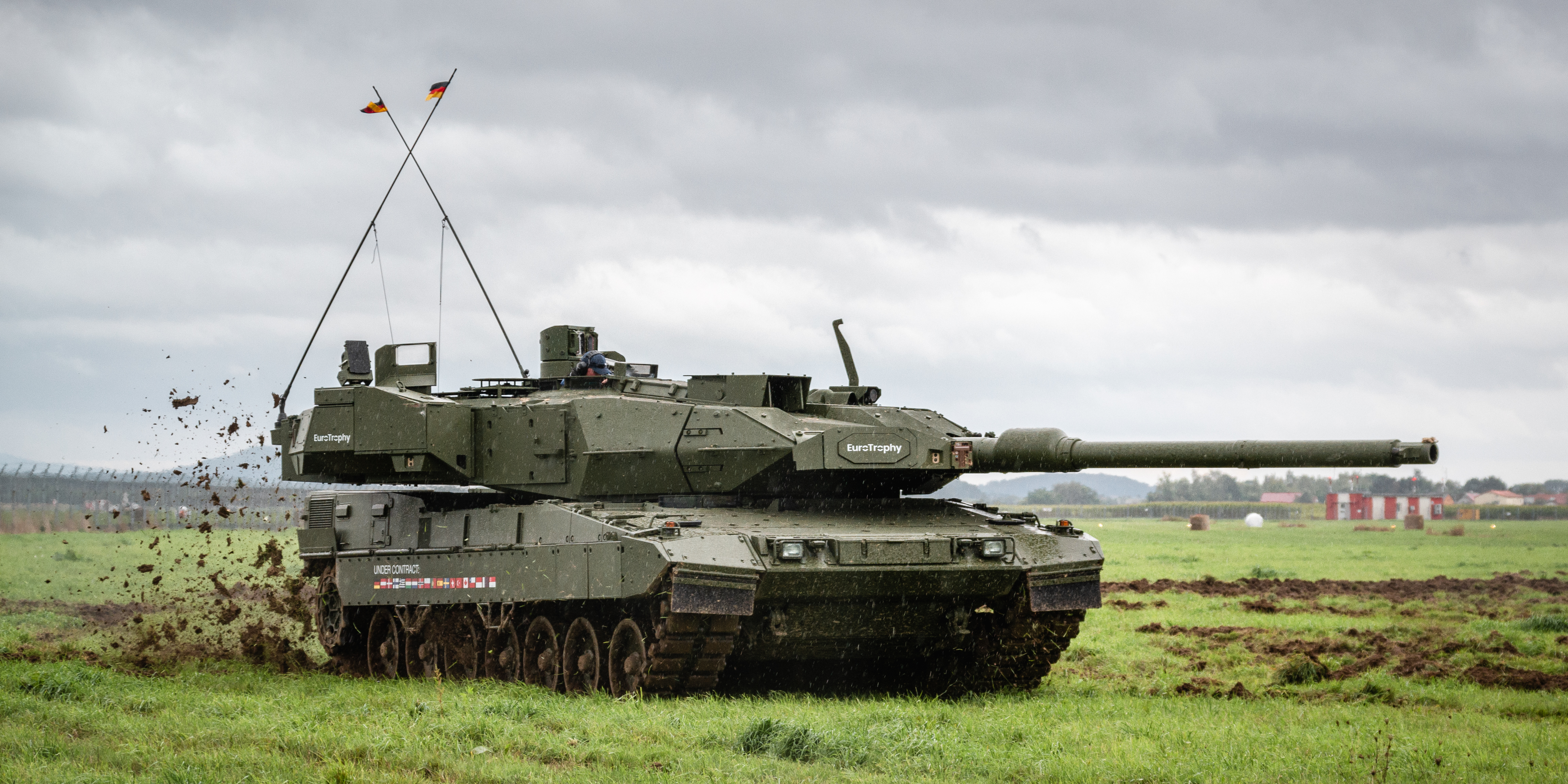



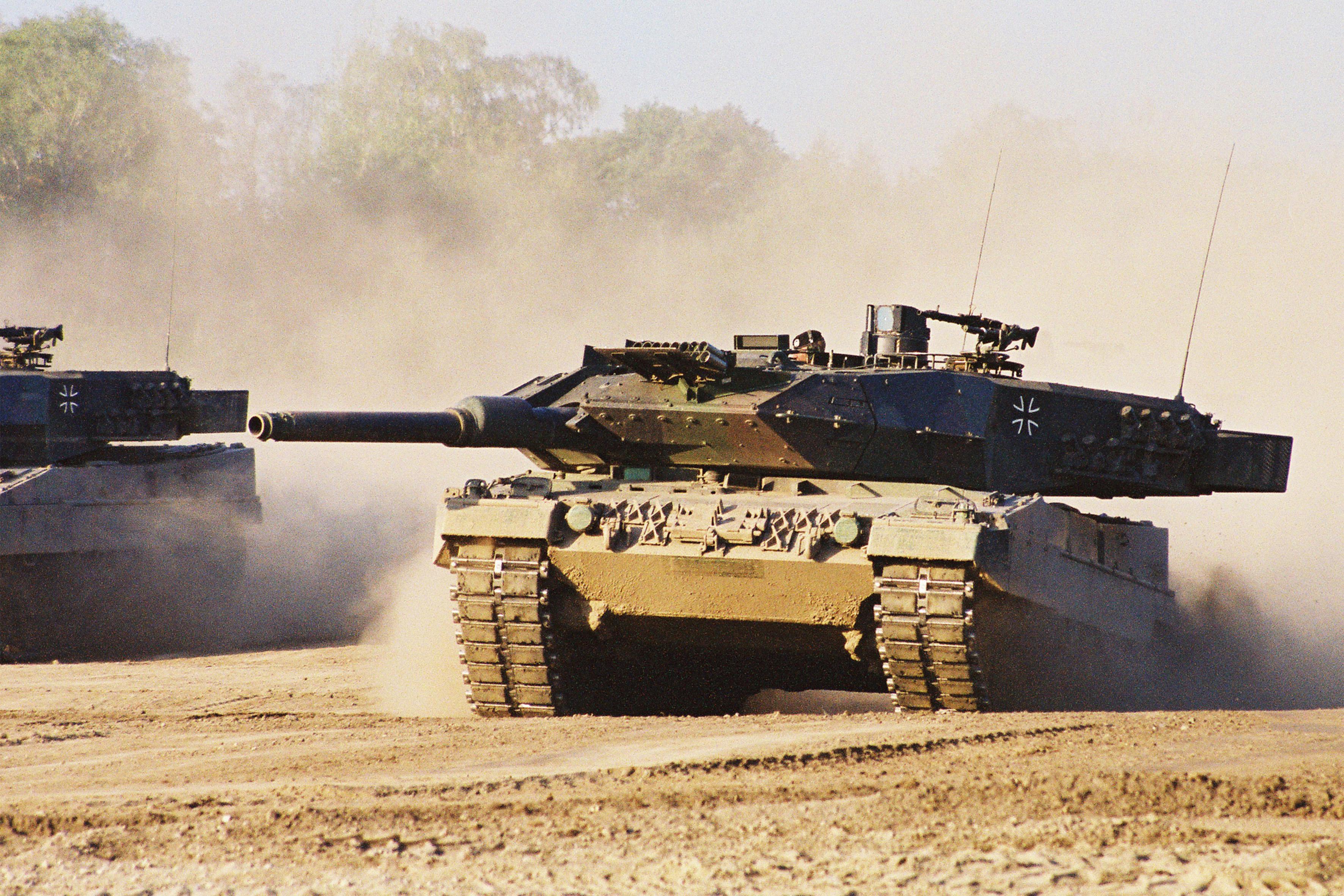










Collection of “Leopard Tank 2” posters in Russian, Arabic, Farsi, Kurdish and Azeri languages:

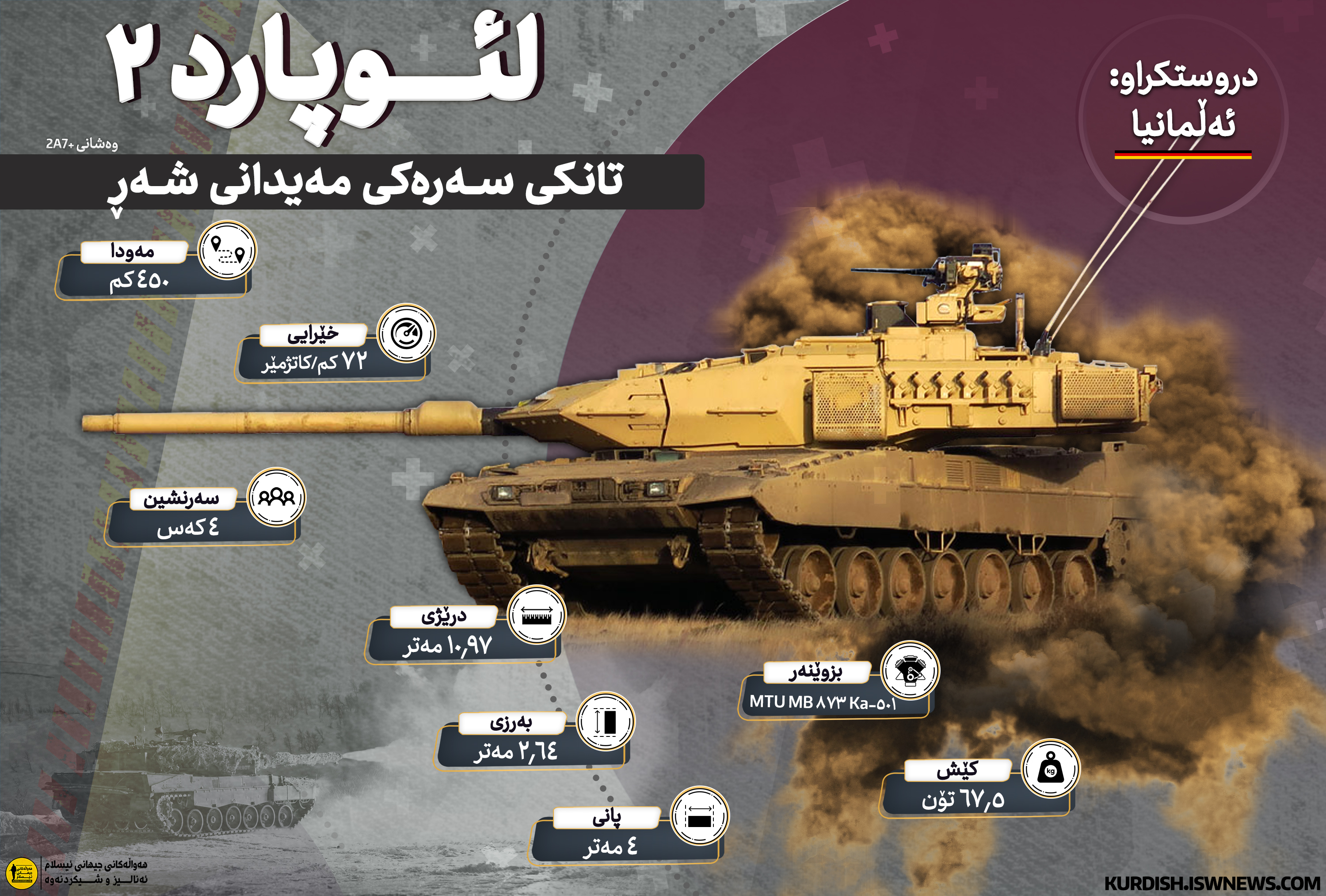



Sources:
Leopard 1
Leopard 2
Panther KF51
Leopard 2A4 MBT
LEOPARD 2A7+ MBT KMW
KMW LEOPARD 2
Leopard 2 ammunition storage plan
ammunition hatch in the Leopard 2A3
Germany approves Leopard 1 battle tank exports to Ukraine
Leopard 2 tanks: what are they and why does Ukraine want them?
Leopard 2 Main battle tank
Leopard 2A4M CAN Main battle tank
KMW DELIVERS BATCH OF NEW LEOPARD 2A7+ MBTS TO QATAR
Leopard 2A4 “FIN”
Leopard 2PL Programme Showcased
Leopard 2A4 missing telescopic gun sight & EMS-15 magnification
Leopard 2A6EX
Leopard 2 A7+ Main Battle Tank
Main battle tank

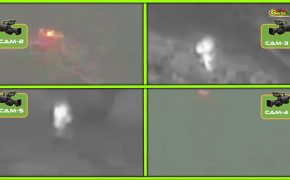

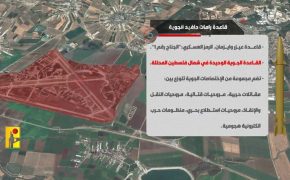
Comment